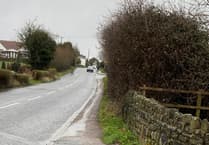THE railway from Lydney to Gloucester will be closed for most of this summer to allow crews to carry out £25 million works to shore up the cliff face between Purton and Awre.
Network Rail (NR) announced the closure as part of an update on its Severn Estuary Resilience Programme last week, through which it aims to secure the future of the “critical” line that connects South Wales with the West County, the Midlands and the north of England.
The stretch of railway will be closed for passengers for seven weeks between Monday, July 18 and Saturday, September 3.
The closure will be extended to Severn Tunnel Junction until Saturday, July 30 to allow works to be completed near Chepstow.
NR says Transport for Wales and CrossCountry are currently planning how rail services and replacement buses will operate during the closure, and will announce the details when they are finalised.
A statement from NR said: “We will work with our train operator colleagues to keep our passengers moving during this period, which has been chosen to minimise the impact on schoolchildren travelling between Lydney and Gloucester.”
The company announced a £25 million investment to improve the resilience of the line in September last year.
It says the “vital transport link” is becoming increasingly affected by climate change and extreme weather, with five major landslips having “devastated” the line in the last two years alone.
The landslips have led to extended closures and temporary speed restrictions, which have delayed more than 200,000 trains.
As well as disrupting passengers, the closures have also impacted “essential” freight services, with 43 freight trains carrying steel, petrol, supermarket goods and construction materials passing through every week.
NR says that during parts of the closure, the line will be opened at night to allow freight trains to reach their desination.
The works beginning in July will be focused on a three-mile stretch of the line close to Purton, Etloe, Little Hagloe and Awre.
More than 30,000 tonnes of material will be removed from the cliff face, while a “state-of-the-art” mesh and bolt system will be installed to stabilise it and prevent landslips from affecting the track below.
Preparation work to install soil nails and netting in a high-risk area of the cutting near Little Hagloe is due to finish soon, while concrete blocks have been placed at the bottom of the cliffs act as a barrier in other areas.
Ground investigations have also been completed and vegetation will be cut back in line with ecological restrictions.
Works will continue into 2023 with soil nailing into the mesh to “retain the slope and reduce weathering” in high-risk areas, and they are plans to continue the scheme in lower-risk areas in the following year.




